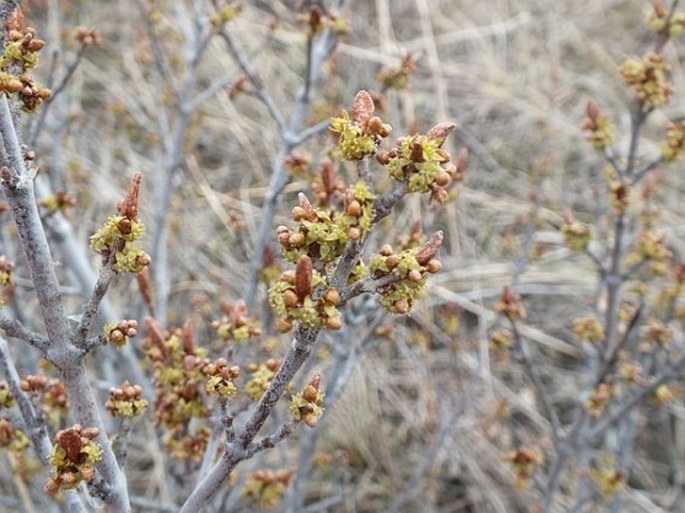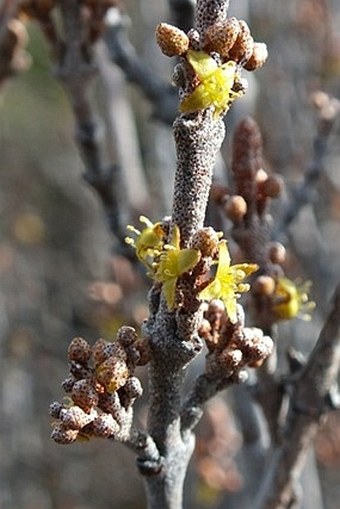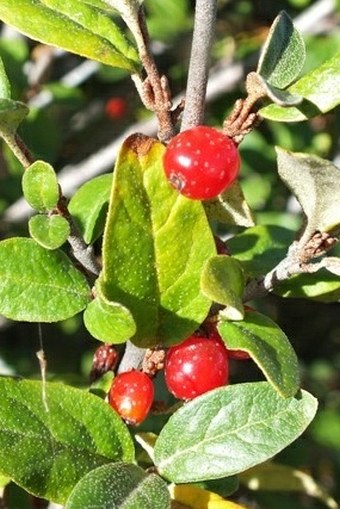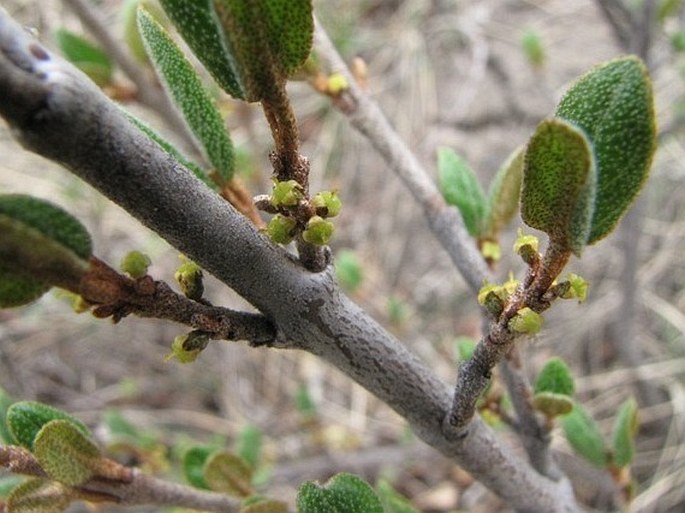Syn.: Elaeagnus canadensis (L.) A. Nelson, Hippophae canadensis L., Lepargyrea canadensis (L.) Greene
Family: Elaeagnaceae Juss.

Distribution: North American species found from Alaska, Yukon and Northwest Territories, along US-Canadian border across the continent; but the main occurrence is in the western part of the continent from British Columbia, Alberta, Saskatchewan and Manitoba south to Arizona and New Mexico.
Ecology: Open woods, slopes and riverbanks, blooms in May and June.
Description: Shrub, 1–3 m high, spreading, dioecious. Young branches brown, scaly, older bark greyish black. Leaves opposite, deciduous, oval to elliptical, 25–50 × 0.5–30 mm, green above, scaly with reddish brown trichomes below, petioles 1 cm long, smooth margins. Inflorescence is a cyme, from leaf axils; flowers appearing before leaves, about 4 mm across, yellowish brown, separate male and female, 4 sepals, petals absent, 8 stamens, 1 pistil. Fruit is a berry, red 4–6 mm across, edible, very tart.
Threat and protection: Illinois, Maine and Pennsylvania list this species as endangered, in Indiana it is considered extirpated.
Note: Native tribes believed that when the berries were ripe it was time to hunt buffalo (bison). Name Soapberry reflects the content of saponin. The berries are the favourite food of bears in the fall, before hibernation.





These images were taken in Canada, Alberta, Calgary, Confluence and Nosehill Parks (2013).


